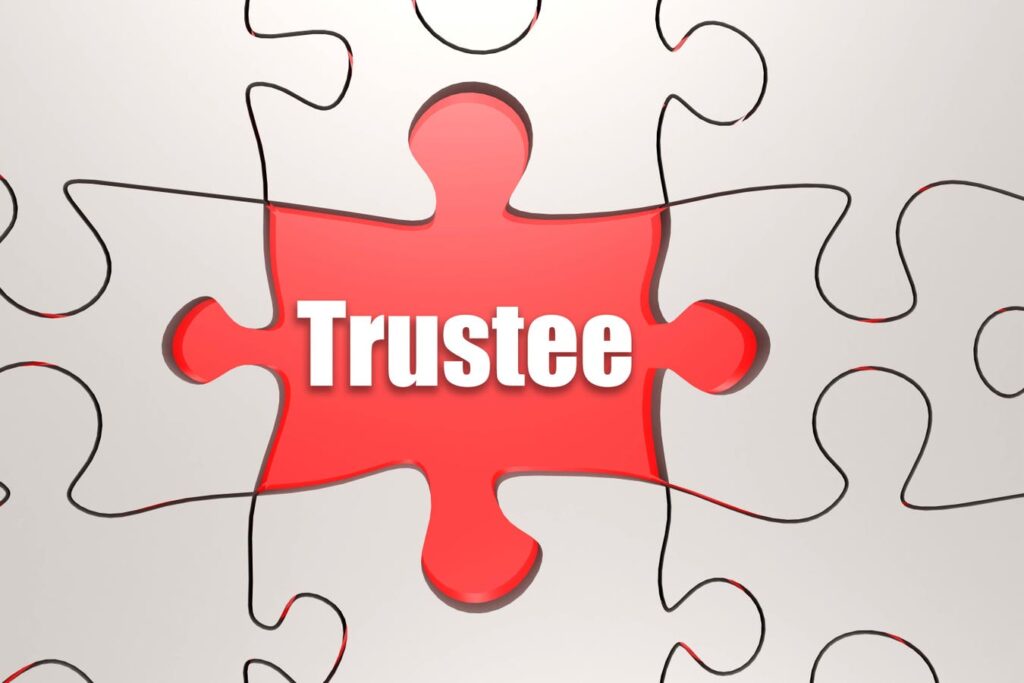Introduction
So, Aunt Jane just asked you to be the trustee of her trust. You were flattered and, of course, accepted. But what did you get yourself into? Too many consumers readily accept fiduciary appointments with little thought of the headaches and liability they may face. While it can be admirable to help family and friends out, you can take steps to endeavor to minimize the hassles that too often afflict fiduciaries and potentially reduce the liability you may face.
Before Saying Yes
Perhaps one of the first steps to avoid problems is to be honest with yourself and whoever wants to name you (which presumes they have asked you in advance, which doesn’t always happen). Do you have the time to devote to the duties that will be required of you? These are discussed in the next section, but remember that every fiduciary role can differ depending on the circumstances involved.
If you really can’t do the job properly, don’t undertake it. If you are unsure what responsibilities and time requirements might be involved, have whoever is naming you meet with you and their attorney to discuss it. If you were appointed unknowingly, e.g., Aunt Jane named you successor trustee and never told you. You only found out when she died, and the attorney or family called to inform you. In the latter case, speak to the attorney for the estate before accepting the appointment. If the estate or trust doesn’t have an attorney, it may be worth investing the cost to pay an attorney for a consultation to determine whether you should accept (and if not, the right way to decline).
When you are assessing whether you can do the job, don’t forget that it can be reasonable to hire an attorney, CPA, investment adviser, and other professionals as needed to help. But does the estate or trust have sufficient liquidity to pay professionals? Are the amounts involved large enough to justify hiring professionals?
Also, you should try to objectively assess what issues there might be. So, if Aunt Jane had four nieces and nephews, and they would all share equally in the estate, it may not sound bad. In contrast, if Aunt Jane has three children and leaves 70% of her wealth to one, 30% to the second, and nothing to the third, it already sounds like conflicts may abound. If one of the heirs has drug or other addictions, might that make your job more difficult and add additional tasks and responsibilities? Are those manageable for you?
What is the nature of Aunt Jane’s assets? If she owns a condo and brokerage account, that might be relatively simple. But if she owns raw land or a vacant building, that may be more complex. Does she have valuable collectibles that may be difficult to secure, protect, and sell?
What Different Fiduciary Roles Might You Serve In?
While there are many common responsibilities that all fiduciaries face, the ones you might be saddled with will depend, in part, on the specific role or roles you will serve. Fiduciary is a broad term meaning a position of trust and responsibility.
You might be an agent under a durable power of attorney. That will give you the responsibility to handle Aunt Jane’s financial and legal matters if she is or becomes incapacitated. That role, while similar in some ways to being an executor or trustee, is different. The role of an agent may be limited if Aunt Jane had set up a revocable trust (see below) to help manage her assets. As an agent, you won’t have any responsibility over those assets. Also, when Aunt Jane dies, your role ends. That could be years or decades (e.g. if Aunt Jane was injured or developed competency issues but lived for a long time after that).
An executor (also called a personal representative) is the person who administers someone’s estate when they die. That may include having the will admitted to probate (filed with the court along with required forms and documents). The executor has a finite role in that assets are distributed to the beneficiaries once the estate is settled (all assets collected and bills paid). Then, the executor’s role concludes.
You might be named as a trustee or successor trustee (e.g., after Aunt Jane cannot serve) under a revocable trust. In that capacity, you might take over the management of trust assets and affairs if Aunt Jane can no longer handle those matters because of health or other reasons. In that role, you may only step up to bat when Aunt Jane cannot do so. That may be years or decades after the trust is created. One of the more challenging times may be transitioning from Aunt Jane as the initial trustee to you as the successor. The steps and issues will depend on what the trust document says about when and how you take over. Also, how Aunt Jane steps down may affect the degree of complexity in passing the trustee baton to you. If Aunt Jane is prudent and realizes her abilities are fading, she might sign a resignation letter while still well enough to do so; thereby, you become the successor trustee. In many situations, the person creating the revocable trust won’t let go until they are forced to. You might then have to obtain letters from Aunt Jane’s physicians confirming she no longer has the ability to manage her own affairs. That is not always easy to obtain. As successor trustee, you may only serve until Aunt Jane dies, similar to the agent under a power of attorney discussed above. On the other hand, on Aunt Jane’s passing, assets may pass to one or more trusts for her other heirs, and you may be named trustee of those. As with all fiduciary positions, you must carefully read and understand the nuances of the legal document creating your position.
As explained above, you might be named trustee of a trust or trusts formed on Aunt Jane’s passing for her heirs/beneficiaries. Your role will be to administer those trust funds in accordance with the terms of the trust Aunt Jane created for the various beneficiaries. It is common with modern trusts that the trust will continue for well beyond your lifetime. So, that fiduciary role may not end until you resign when, for example, your health prevents you from continuing. What you will have to do will depend greatly on the terms of the trust, the needs of the beneficiaries, the assets involved, etc.
As a final note, it has become common in modern trusts to name more than just one fiduciary. For example, an irrevocable trust created by Aunt Jane on her passing, e.g., under her will, might include just one trustee or any combination of the following (depending on what is in the legal document and what state law permits):
· Co-trustee. This is someone who serves as a trustee with you (or co-agent or co-executor). What your role is and how you will operate in that capacity will require coordination and communication with the co-fiduciary. You will also have to determine if the legal document and state law might permit each fiduciary to act independently. That might mean you can sign a check without the co-trustee also signing. Even if that is permitted full and open communication will be critical with the co-fiduciary. In many, if not most, cases, however, all named fiduciaries have to unanimously on any action. That might require all trustees to sign a check, bank accounting opening statement, etc.
· Investment Trustee or Advisor – this is a role that carves out some or all investment functions for a named person to exercise them. This might mean that the general trustee has authority for all trustee functions other than investments (or investment of the specific class of assets reserved to the named investment trustee or adviser). If the person is named a co-trustee, they will act as such, which will mean a bifurcation of the trustee role. If the person acts as an Advisor, they will direct the trustee, perhaps you, to take certain actions. You may have reduced or no liability for following the directions from that Advisor depending on the trust and state law. But it will be a carve-out of a power/role that the trustee had traditionally handled.
· Trust Protector is a role that typically gives the named person specified powers, such as to demand an accounting (see below), to remove and replace a trustee (which may include you), to change the law and place of administration of the trust (e.g., to a new state with more favorable income tax rules), etc.
· Distribution Trustee or Advisor This may be a person who has responsibility for distributions.
What Might Your Responsibilities Include?
So, you now understand that the scope of your role will vary depending on the type of legal document appointing you, the provisions in that legal document, and the circumstances involved. Some of the common responsibilities may include the following:
In your fiduciary role, you must determine an investment strategy for trust assets. This is not necessarily simple and should be documented with the creation of an Investment Policy Statement (“IPS”) that is consistent with the terms of the trust (or other governing document), the assets held, the needs of beneficiaries, etc. If you do not have the professional expertise to model trust income and expenses and create an appropriate investment plan based on this, hire a professional. If an investment professional does budgeting for trust expenses and beneficiary needs, prepares financial forecasts, and, based on that, an investment plan to meet trust objectives, you might reduce your fees as trustee if this fundamental history fiduciary duty is delegated to another.
Once you have an investment plan, you have to invest trust assets in accordance with that plan. Other trust assets may have to be managed and protected, e.g., the trust owns a house a beneficiary lives in. In the latter case, you might want to have a written agreement with the beneficiary/user so that their obligations as to paying rent (or not), having appropriate insurance coverage, etc., are all spelled out.
As a fiduciary, you will generally have to collect income and make distributions based on the terms of the trust. Old-style trusts often mandated that income be paid to one person or group of beneficiaries. In those cases, you must be mindful of what expenses and income are allocated to current or income beneficiaries and which to remainder beneficiaries who take their share after the interests or rights of the current or income beneficiaries end. That can be complicated. It will also affect the investment plan, to whom each expense and type of income is allocated, and what you distribute. If that seems complicated, the more modern approach to trusts may be even more difficult. Many, perhaps most, modern trusts give the trustee total discretion as to what to distribute and often to whom. That is done because a non-binding and vague distribution standard is safer in the event a beneficiary is sued (their interest is indeterminant, so a creditor may not be able to attach it), and it provides more flexibility to plan distributions to reduce the income tax burned on the trust. But, that leaves up to you all the decisions on what to distribute. That might mean you could periodically poll the beneficiaries about their other sources of income and financial status (but that may depend on what is in the legal documents) and their tax status (e.g., do they live in a high-tax state like NY or CA?). Because of the vagueness of this type of discretionary distribution standard, you might opt to document even more carefully what was done and why.
Is this all sounding complicated yet?
You’ll have to be sure expenses of the trust, estate, or principal (e.g., Aunt Jane) are paid. You probably want to budget those so you can be aware of what expenses may arise, which are appropriate to pay, and whether any can be avoided.
Many trusts have different rules for how income and principal can be distributed. For example, a special type of marital trust that qualifies for the unlimited gift and estate tax marital deduction requires that all income must be distributed to the spouse/beneficiary. However, the rules on principle are flexible, so the trust document could provide almost any type of standard. Thus, how you may distribute income could be quite different than the rules you face as to whether you can, should, or perhaps must make mandatory or discretionary principal distributions.
All of the above may be affected by the income taxes the trust or beneficiaries may pay. As a trustee, you could or perhaps must consider the income taxes (both state and federal) that might affect the trust. How you make distributions may impact who pays income tax on trust income.
Then you or a CPA you hire (a better option as it is complicated) will have to prepare and file income tax returns for the estate or trust (or if you are an agent for the principal who appointed you).
Records and Communications
With all this data that you have from expenses paid, distributions made, income earned, and so forth, you will have to maintain trust records. As a trustee, that is really a key responsibility. Keeping clear records of all that was done and communicating those details in an understandable manner to everyone involved (e.g., current beneficiaries, future beneficiaries, co-trustees, and perhaps others like a trust protector), may also be key to avoiding angst among the beneficiaries and others involved, and in reducing the risks of your facing a lawsuit or claim.
One of the common themes of trust and estate administration is that if beneficiaries and other fiduciaries are not clearly informed of what is going on, they will assume the worst. They may assume you are up to no good if you don’t keep them in the loop on income, expenses, taxes, etc.. That is a situation you want to avoid. Often, just regular clear communication can deflect those types of worries.
As a suggestion, consider the following:
1. Send periodic letters to all involved. List each person who receives the letter and what each person receives (e.g., list every enclosure sent). Number the letters sequentially and date each letter. Consider sending each communication via a method that confirms tracking and receipt. Save proof of delivery for each recipient.
2. Send copies of every key legal document. The primary document may be a power of attorney if you are acting as an agent, a will if acting as executor or as a trustee under a testamentary trust formed under the will, or a trust if you are serving as a trustee (or in another capacity). There may be other documents depending on what is involved. For example, if a trust owns a house, the deed may be a key document. If it owns a life insurance policy, the policy, application, and eventual payment documents may be important to provide.
3. Enclose financial data so that everyone has an understanding of what is involved. What you disclose and to whom may depend on the circumstances. You should probably clear what you will do in advance with an attorney so you are properly advised.
4. Consider listing all expenses paid and distributions made.
What is an Accounting and Should You Prepare One?
An accounting is a formal recording of all receipts and disbursements of a fiduciary arrangement. For example, if you are the trustee of a trust, an accounting would list all assets given or distributed to the trust, any income and other receipts, all expenses and other disbursements, and so forth. An accounting may be a formal accounting done in accordance with the laws of a particular jurisdiction or court.
If you ever terminate serving as a fiduciary, you may want to, or be required to, provide a formal accounting to be released from liability and for a new fiduciary to take over your role. Typically, when someone ceases to serve as a fiduciary, they have the beneficiaries sign a legal document releasing them from further liability. For that document to be effective, the beneficiaries may have to have enough information provided to them so that they can reasonably know what they are releasing. That will typically require the provision of some type of financial information. The more, the better. Sometimes, people merely attach all brokerage statements or refer to the statements previously provided. If that information can be summarized and presented in a clear and understandable way, it may be more difficult for those signing the release to argue in the future that they did not understand the finances involved.
Creating a formal accounting will be much easier if you have kept impeccable accounting records since day one. So, at minimum, consider keeping detailed records. Those may also be helpful, if not essential, in providing the information necessary to complete annual income tax returns and to provide communications periodically to beneficiaries and others.
There may be special circumstances that might require that you have a formal accounting prepared. If you are sued, a formal accounting may be necessary. If there are charitable beneficiaries, the state Attorney General may require reporting that requires a formal accounting.
When you begin to serve, discuss with a CPA specializing in fiduciary accounting and an attorney and make a deliberate decision as to what level of accounting will be done, who will do what, and what is involved. Be sure to clarify what specific steps you should take.
Receipt and Release
As noted above, if you are going to cease serving as a fiduciary or close the estate or trust, the customary approach is to have all beneficiaries sign a legal document that generally acknowledges what they have received and that they are releasing you from any claims. However, a well-crafted receipt and release will contain much more. In some cases, a broader document, called a “receipt, release, and refunding bond,” may be used. That document has the beneficiaries agree to refund to the estate or trust what they have received if necessary to meet a newfound expense or a liability of the trust or estate.
Some of the items you might choose to address in a receipt and release might include:
· The purpose of the receipt and release. For example, if you served as an agent under John Smith’s durable power of attorney for 12 years, from the date he suffered a traumatic brain injury until the date of his having a court-appointed guardian, you may be seeking to be released for all that you did during that time period. The release you seek may be signed by the guardian once appointed and perhaps by family members involved. Whatever the facts and objectives, they should be stated.
· Details of the legal arrangement that created your fiduciary position (e.g., the name of the person creating a trust, the date the trust was created, the name of the trust, the tax identification number for the trust, and, of course, a copy of the trust document).
· Listing of all documents, reports, and statements provided. If you follow the recommended suggestion of periodic informational letters, providing copies of the letters as an exhibit and referring to the attachments listed in each may suffice. If there are any important documents or statements that were not already provided, they should be listed, explained, and attached to the receipt and release.
· Copies of all income tax returns. For example, if you were a trustee of a trust, the trust income tax returns for the period you served should have been or should be provided.
· The beneficiaries signing the release should agree not to request any further disclosures and that the disclosures made in the receipt and release, the attachments, and the documents previously provided that are references in the receipt and release sufficed for them to release you from any liability or claims.
· The beneficiaries should acknowledge any distributions or payments made to them.
· They should waive any further rights to seek court or other actions.
· Consider having the beneficiaries agree to cover any future identified expenses or liability of the estate or trust, as the case may be.
· Any fees you were paid for serving as a fiduciary should be indicated along with how they were calculated, the provisions in the legal document and state law that support the fees you were paid, etc. For example, if you were entitled to a fiduciary commission under state law based on the value of assets, you should disclose the values of assets and the calculation. Explain how values were calculated and if they were based on appraisals or estimates have those attached. The beneficiaries should acknowledge what you were paid, agree to those payments, and waive any rights to contest those payments.
· If any beneficiaries are minors or under a disability, determine with the guidance of an attorney how they can be bound to the agreement. It may be possible that a parent or other person may be able to sign on behalf of minors that would claim under them (called virtual representation). In other instances, a minor or incapacitated beneficiary may have to have a court appoint a guardian to sign off for them.
The attachments to the receipt and release are critical to securing limitation on your liability. As noted above, these may include all historical brokerage or other statements and a summary or report that makes clear the “big picture” of what occurred. Other disclosures may also be helpful or critical.
If you are seeking to be released from liability as a personal representative of an estate, attaching a copy of the estate tax return and all its exhibits may be important or essential. If the return was previously provided, e.g., as part of the periodic reports suggested above, you might include a reference to the number and date of the informational letter that included it. If the decedent owned real estate, e.g., a vacation home, a copy of the deed, sales contract, and other relevant information. If there was a business involved that was sold, the sales contract should be included. If you, as the fiduciary, were involved in any transactions, detailed and careful disclosure of any involvement you had might be essential. However, before you, as a fiduciary, have any involvement, even tangentially and insignificantly, in any transaction or financial arrangement, you should discuss it with an attorney. The rules are incredibly strict on the care that a fiduciary must exercise to avoid self-dealing and put the interests of the beneficiaries first.
Conclusion
Serving as a fiduciary can be a noble act and be of great help to family members, friends, or loved ones. But improperly handled, it can be a difficult, stressful, and costly endeavor. Carefully evaluate before accepting any such appointment what is involved. Get professional help before, during, and at the end of serving as a fiduciary to be sure that you handle your responsibilities properly, and protect the beneficiaries as well as your own interests.
Read the full article here













